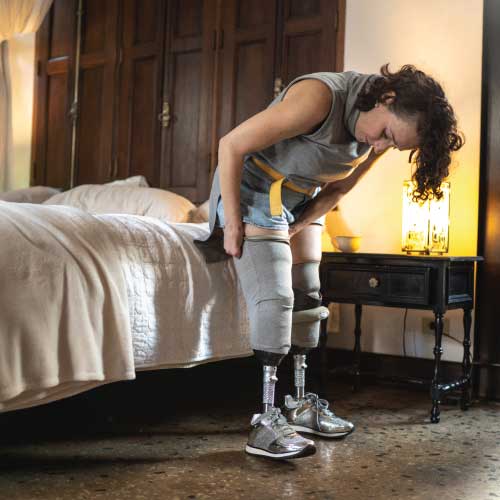58% of U.S. Amputees Don’t Receive Post-Amputation Care
A study recently published in the Journal of Vascular Surgery (JVS) found that only 42% of new lower-limb amputees get the chance to see a prosthetist. Meanwhile, the remaining 58% of amputees in the study were consigned to a higher-risk category by not getting referred to a prosthetist.

These findings come as no surprise. According to the National Limb Loss and Preservation Registry director, Dr. Kenton Kaufman, two-thirds of amputees never receive a prosthetic limb. The Triple A Study Act echoed the same issue. The lawmakers behind the bill found that out of the 2.1 million Americans experiencing limb loss and limb difference, only 30% to 35% receive a prosthetic device through the Veterans Health Administration.
In the new study, the authors found that cost and insurance—the most common barriers to access—weren't the cause of the lack of post-amputation care. The researchers focused on the initial consultation with a prosthetist, which can often be availed for free. Furthermore, the study looked into patients that went to a prosthetic clinic that serves the under insured and uninsured.
Patients were less likely to be referred to a prosthetist if they had the following attributes: diabetic, female, smoker, has an ASA score of four or five, and are aged above 70.
So, what kept the patients from getting the post-amputation care they need? The findings were unexpected. Patients were less likely to be referred to a prosthetist if they had the following attributes: diabetic, female, smoker, has an ASA score of four or five, and are aged above 70.
Patients above 70 are often deemed better served by other assistive devices, such as crutches or a wheelchair. This is because of the risks associated with stamina, balance, and other physical issues.
Meanwhile, the American Society of Anesthesiologists developed the ASA fitness scale to assess patients' fitness for surgery. Patients who score either 4 or 5 have significant life-threatening health issues besides their limb loss. Examples of such conditions include heart problems, kidney impairment, or intestinal obstructions, among others.
The authors noted in the study that patients with a four or five ASA fitness score might be in trouble if they are referred for a prosthetic fitting due to their life-threatening health conditions.
Some of the patients surveyed in the study may indeed be unsuitable for a prosthetic limb fitting. Unfortunately, other patients might be denied prosthetic care based on their gender, age, lifestyle, or flaws in the healthcare model. Since standardized criteria for prosthetist referral don't exist, it's impossible to determine whether these patients are genuinely unsuitable for a prosthetic limb in a clinical sense.
The researchers concluded the study by acknowledging that risk factors for post-amputation care referral have not been adequately investigated. They also noted that prosthetic referral and care were associated with better outcomes, even after controlling other risk factors. The good news is that initiatives like the Triple A Study Act and the Limb Loss Registry may lead healthcare providers in the right direction.










































































